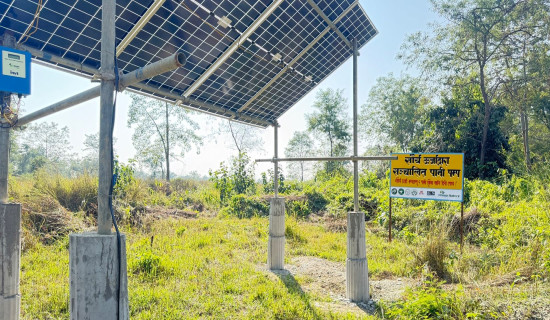- Thursday, 27 November 2025
Eliminate Leprosy
World Leprosy Day is observed on the last Sunday of January each year. The theme of this year's World Leprosy Day is 'Beat Leprosy'. The primary purpose of this day is to raise awareness about leprosy, eliminate the stigma associated with the disease, promote efforts to reduce the infection, improve the quality of life for those affected, and promote the dignity of people infected by leprosy. Nepal government has set a goal to eradicate leprosy and make Nepal a completely leprosy-free country by 2030. But still, thousands of cases of leprosy are being reported each year. So it seems that we need to work harder to achieve this goal.
Leprosy is an infectious disease caused by the bacterium Mycobacterium leprae. It primarily affects the skin and peripheral nerves but can also involve other organs. Leprosy has been known since ancient times, and it carries a social stigma and superstitions due to historical misconceptions and fear associated with the disease. Although there is no vaccine for the disease, it is treated with multi-drug therapy, an approach that combines different types of antibiotics.
According to data from the Epidemiology and Disease Control Division of the Department of Health Services (EDCD), in the fiscal year 2022/23 alone 2,522 new leprosy cases were reported in Nepal. Dr. Prashanna Napit, Section Chief at the Leprosy Control and Disability Management Section of EDCD, has revealed that currently, 2,510 leprosy patients are receiving treatment. Among them, 1,049 are women, and 181 are children under 14 years of age. The new patients include 189 in disabled condition, eight of them children.
Dr. Napit emphasised an accumulation of leprosy incidents in the Madhes districts and Lumbini Province, revealing that one out of every 10,000 individuals is affected by leprosy. Furthermore, he observed the existence of leprosy patients in 14 districts. Leprosy is a disease of global health concern, with a higher prevalence in some developing countries. Efforts by international organisations, governments, and non-governmental organisations aim to eliminate leprosy as a public health problem. It is important to note that leprosy is a treatable disease, and early detection and proper treatment can prevent disabilities and reduce the risks of transmission.
The World Health Organisation (WHO) has been working towards the goal of eliminating leprosy as a public health problem, but challenges remain in certain regions. Additionally, efforts to reduce the stigma associated with leprosy can encourage individuals to seek medical attention sooner, facilitating prompt diagnosis and treatment. We should take World Leprosy Day as a day to beat the stigma attached to it and an opportunity to show compassion and respect to all the leprosy survivors, who bravely fought this infectious disease.
Despite advancements, individuals who have successfully recovered from leprosy still face ongoing social stigmatisation. They contend that Nepali legislation, specifically Section 71 of the Civil Code 2074, sustains discrimination against leprosy survivors. This provision forbids marriage with a person with leprosy and permits the annulment of such marriages. This provision needs to be revised as leprosy is curable and no longer a threat as it used to be in the past, and we should strive to create a world where every individual gets a chance to live with dignity and happiness.

















